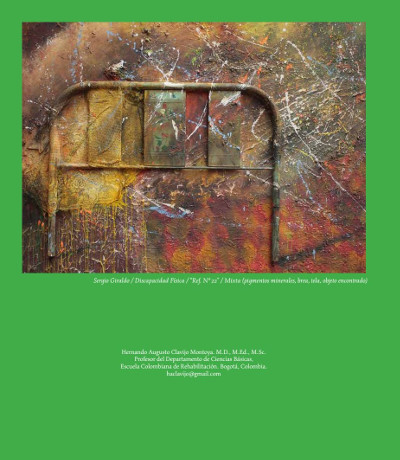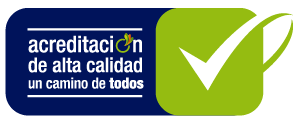Reflexiones sobre la integración de las ciencias básicas biomédicas con la práctica Clínica En Programas de pregrado
Contenido principal del artículo
Autores
Hernando Augusto Clavijo Montoyahaclavijo@gmail.com
Resumen
Las ciencias biomédicas han incorporado desde hace varios años, y de forma definitiva, los lenguajes de la genética, la biología molecular y la bioinformática con un volumen de publicaciones que cada año aumenta de forma exponencial. Sin embargo, tradicionalmente es reconocida la preocupación por la integración de los descubrimientos de las ciencias básicas biomédicas con la práctica clínica, la cual es de interés científico y académico a nivel de pregrado y de postgrado así como en la práctica profesional en las ciencias de la salud. La medicina traslacional tiene por objetivo hacer estos procesos de integración de una forma más efectiva. En el artículo son tratados diferentes temas de interés, relacionados con la medicina traslacional, en diferentes programas de la salud con énfasis en la educación en el pregrado.
Palabras clave:
Detalles del artículo
Licencia
Aquellos autores/as que tengan publicaciones con esta revista, aceptan los términos siguientes:
- Los autores/as conservarán sus derechos de autor y garantizarán a la revista el derecho de primera publicación de su obra, el cuál estará simultáneamente sujeto a la Licencia de reconocimiento de Creative Commons que permite a terceros compartir la obra siempre que se indique su autor y su primera publicación esta revista.
- Los autores/as podrán adoptar otros acuerdos de licencia no exclusiva de distribución de la versión de la obra publicada (p. ej.: depositarla en un archivo telemático institucional o publicarla en un volumen monográfico) siempre que se indique la publicación inicial en esta revista.
- Se permite y recomienda a los autores/as difundir su obra a través de Internet (p. ej.: en archivos telemáticos institucionales o en su página web) antes y durante el proceso de envío, lo cual puede producir intercambios interesantes y aumentar las citas de la obra publicada. (Véase El efecto del acceso abierto).
Los autores que publican en la revista se acogen al código de licencia de Creative Commons Atribución 4.0 Internacional (CC BY 4.0)




Referencias
Berthier, M. L., & Pulvermüller, F. (2011). Neuroscience insights improve neurorehabilitation of poststroke aphasia. Nat Rev Neurol. , 7 (2), 86-97.
Bialocerkowski, A., Wells, C., & Grimmer-Somers, K. (2011). Teaching physiotherapy skills in culturally-diverse classes. BMC Medical Education (11), 34.
Buckingham, J. C. (2012). Integrating pharmacology and clinical pharmacology in universities. British Journal of Clinical Pharmacology, 73 (6), 861-865.
Burgoyne, L. N., O'Flynn, S., & Boylan, G. B. (2010). Undergraduate medical research: the student perspective. Retrieved June 19, 2013, from Medical Education Online: http://hinari-gw.who.int/whalecomwww.ncbi.nlm.nih.gov/whalecom0/pmc/articles/PMC2939395/#!po=28.9474
Cabieses, B., & Espinoza, M. A. (2011). La investigación traslacional y su aporte para la toma de decisiones en políticas de salud. Revista Peruana de Medicina Experimental y Salud Pública, 28 (2), 288-297.
Clark, F., Park, D. J., & Burke, J. P. (2013). Dissemination: bringing translational research to completion. Am J Occup Ther. , 67 (2), 185-193.
Contopoulos-Ioannidis D.G., N. E. (2003). Translation of highly promising basic science research into clinical applications. Am J Med (114), 477-484. .
Diab, A. A., & Moustafa, I. M. (2012). Lumbar lordosis rehabilitation for pain and lumbar segmental motion in chronic mechanical low back pain: a randomized trial. J Manipulative Physiol Ther. , 35 (4), 246-253.
DiGiovanni, B. F., Ward, D. S., & Lambert, D. (2011). Process of discovery:A fourth-year translational science course. Retrieved June 19, 2013, from http://hinari-gw.who.int/whalecomwww.ncbi.nlm.nih.gov/whalecom0/pmc/articles/PMC3230242/
Drake, R., McBride, J. M., Lachman, N., & Pawlina, W. (2009). Medical education in the anatomical sciences: The winds of change continue to blow. Anatomical Sciences Education (2), 253-259.
Ferrell, C. B. (2009). Reengineering clinical research science: a focus on translational research. Behav Modif, 33 (1), 7-23.
Ferring, D. (2009, June). Bridging education and training in ageing and disabilities: towards translational education. Retrieved June 17, 2013, from International Journal of Integrated Care: http://www.ijic.org/index.php/ijic/article/view/URN:NBN:NL:UI:10-1-100584/682
Floel, A., & Cohen, L. G. (2006). Translational studies in neurorehabilitation: from bench to bedside. Cogn Behav Neurol., 19 (1), 1-10.
Fuentes, A. (2009). Medicina traslacional en la oncología mexicana.GAMO, 8 (3), 81.
Gamulin, S. (2003). Impact of molecular medicine on pathophysiology,medical practice, and medical education. Croat Med J., 44 (4), 374-385.
Grande, J. P. (2009). Training of physicians for the twenty-first century:role of the basic sciences. Med Teach., 31 (9), 802-806.
Hasselbart, C. (2008). Futuro de la Medicina traslacional en cáncer. Cancerología (4), 7-8.
Hazelton, L. (2011). Changing Concepts of Neuroanatomy Teaching in Medical Education. Teaching and Learning in Medicine , 23 (4), 359-364.
Holden, K. R., Cooper, S. L., & Wong, J. G. (2012). Neuroscience curriculum changes and outcomes: medical university of South Carolina, 2006 to 2010. Neurologist., 18 (4), 190-195.
Ifejika-Jones, N. L., & Barrett, A. M. (2011). Rehabilitation--emerging technologies, innovative therapies, and future objectives. Neurotherapeutics.,8 (3), 452-462.
Ioannidis, J. P. (2004). Materializing research promises: opportunities,priorities and conflicts in translational medicine. J Transl Med , 2 (1), 5. Jones, E. G. (2007). Neuroanatomy: Cajal and after Cajal. Brain Res Rev, 55(2), 248-255.
Kiefe, C. (2011, May 20). What is Translational Research? Retrieved June 19,2013, from University of Massachusetts Medical School, Dept of Quantitative Health Sciences : http://escholarship.umassmed.edu/cgi/viewcontent.cgi?article=1000&context=cts_retreat&sei-redir=1&referer=http%3A%2F%2Fwww.google.com%2Furl%3Fsa%3Dt%26rct%3Dj%26q%3Dtranslational%2520t1%2520t2%2520t3%2520t4%26source%3Dweb%26cd%3D5%26ved%3D0CEgQFjAE%26url%
Lewis, H. P. (1956). Integration of basic science with clinical training. JAMA, 161 (1), 27-29.
Liaison Committee on Medical Education. (2011, May). Functions and structure of a medical school. Standards for Accreditation of Medical Education Programs Leading to the M.D. Degree. Retrieved June 19, 2013, from http://www.lcme.org/functions2011may.pdf
Lifshitz, A. (2009). Medicina traslacional (traduccional, traducida, traslativa, trasladada). Med Int Mex, 25 (4), 251-253.
Lim, P. (2005). Translational Research. Annals Academy of Medicine, 34 (7),409-410.
Mainous, A. G., Johnson, S. P., Chirina, S., & Baker, R. (2013). Academic family physicians' perception of genetic testing and integration into practice: a CERA study. Fam Med. , 45 (4), 257-262.
McCormack, P., Southern, K. W., & McNamara, P. S. (2012). New nebulizer technology to monitor adherence and nebulizer performance in cystic fibrosis. J Aerosol Med Pulm Drug Deliv., 25 (6), 307-309.
McGartland, D., Schoenbaum, E. E., Lee, L. S., Schteingart, D. E., Marantz, ,. P., Anderson, K. E., et al. (2010). Defining Translational Research:Implications for Training. Acad Med, 85 (3), 470-475.
Moon, K., Andreas, K., & Cohen, A. R. (2010). The Birth and Evolution of Neuroscience Through Cadaveric Dissection. Neurosurgery, 67 (3), 799-810.
Overman, J. J., & Carmichael, S. T. (2013, June 11). Plasticity in the Injured Brain: More than Molecules Matter. Retrieved June 16, 2013, from The Neuroscientist: http://nro.sagepub.com/content/early/2013/06/11/1073858413491146
Padilha, M. I. (2011). Translational research – what is its importance to nursing practice? Texto Contexto Enferm, 20 (3), 221-222.
Prithishkumar, I. J. (2011). Ludwig Edinger (1855–1918): Founder of Modern Neuroanatomy. Clinical Anatomy, 25 (2), 155-157.
Proudfoot, A. G., Hind, M., & Griffiths, M. J. (2011). Biomarkers of acute lung injury: worth their salt? Retrieved June 19, 2013, from http://hinari-gw.who.int/whalecomwww.ncbi.nlm.nih.gov/whalecom0/pmc/articles/PMC3261814/
Ramjiawan, B., Pierce, G. N., Kabir Anindo, M. I., AlKukhun4, A., Alshammari, A., Chamsi, A. T., et al. (2012). An international basic science and clinical research summer program for medical students. Adv Physiol Educ(36), 27-33.
Raymer, A. M., Beeson, P., Holland, A., Kendall, D., Maher, L. M., Martin, N., et al. (2008). Translational research in aphasia: from neuroscience to neurorehabilitation. J Speech Lang Hear Res., 51 (1), 259-75.
Shuldiner, A. R., Relling, M. V., Peterson, J. F., Hicks, K., Freimuth, R. R.,Sadee, W., et al. (2013, March 19). The Pharmacogenomics Research Network
Translational Pharmacogenetics Program: Overcoming Challenges of Real-World Implementation. Retrieved June 16, 2013, from Nature.com.
Sitaraman, R. (2012). From bedside to blackboard: the benefits of teaching molecular biology within a medical context. Perspect Biol Med., 55 (3), 461-466.
Smeesters, P. R., Deghorain, M., & Steer, A. C. (2011). Science that "knows" and science that "asks". Journal of Translational Medicine, 9, 128.
Steiner, M. C., Roubenoff, R., Tal-Singer, R., & Polkey, M. I. (2012). Prospects for the development of effective pharmacotherapy targeted at the skeletal muscles in chronic obstructive pulmonary disease: a translational review. Thorax., 67 (12), 1102-1109.
Sullivan, K. (2010). Translational Rehabilitation Research: From Science to Practice and Practice to Science. Journal of Neurologic Physical Therapy,34 (2), 119-121.
Tworek, J. K., Jamniczky, H. A., Jacob, C., & Hallgrímsson, B. (2013). The LINDSAY virtual human project: an immersive approach to anatomy and physiology. Anat Sci Educ., 6 (1), 19-28.
Verheyden, G., Handgraaf, M., Demirci, A., & Grüneberg, C. (2011). The future of physiotherapy education: Towards a translational model of learning complex skills. Physiotherapy Research International, 16 (4), 187-190.
Weber, G. M. (2013). Identifying translational science within the triangle of biomedicine. Journal of Translational Medicine (11), 126.
Wilcox, J. T., Cadotte, D., & Fehlings, M. G. (2012). Spinal cord clinical trials and the role for bioengineering. Neurosci Lett., 519 (2), 93-102.
Woolf, S. H. (2008). The Meaning of Translational Research and Why It Matters. JAMA, 299 (2), 211-213.
Wu, X., Marincola, F. M., Liebman, M. N., & Wang, X. (2013). A global resource to translational medicine: the International Park of Translational Medicine and BioMedicine (IPTBM). Journal of Translational Medicine (11), 8.
Zerhouni, E. A. (2012, June). Trends and challenges in translational research. ED MILLER SYMPOSIUM, JOHNS HOPKINS. Retrieved June 17, 2013, from http://web.jhu.edu/administration/provost/initiatives/Zerhouni.pdf
Zerhouni, E. (2003). Medicine: The NIH Roadmap. Science (302), 63-72.
Zinchuk, A. V., Flanagan, E. P., Tubridy, N. J., Miller, W. A., & McCullough, L. D. (2010). Attitudes of US medical trainees towards neurology education: "Neurophobia" - a global issue. BMC Med Educ. (10), 49.


 PDF
PDF
 XML
XML










